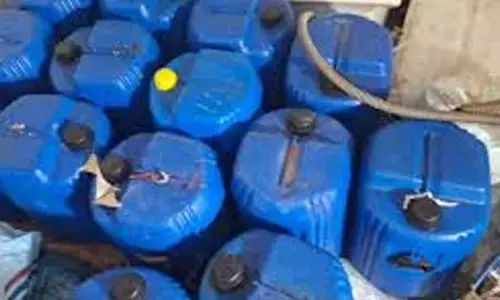Researchers find a way to convert plastics into useful products

Representational Image
Researchers at the Indian Institute of Technology (IIT) Mandi have developed a method that can transform plastic into hydrogen when exposed to light.
Researchers at the Indian Institute of Technology (IIT) Mandi have developed a method that can transform plastic into hydrogen when exposed to light. The generation of hydrogen from plastics is particularly useful because the gas is considered the most practical non-polluting fuel of the future. Researchers at the Indian Institute of Technology (IIT) Mandi have developed a method that can transform plastic into hydrogen when exposed to light. The generation of hydrogen from plastics is particularly useful because the gas is considered the most practical non-polluting fuel of the future.
Plastics, most of which are derived from petroleum, are not biodegradable, i.e., they cannot be easily broken down into harmless products. It is said most of the 4.9 billion tonnes of plastics ever produced would end up in landfills, threatening human health and the environment.
Fuelled by the need to prevent runaway plastic pollution, IIT-Mandi researchers are developing methods that can transform plastic into useful chemicals. This study was funded by the Scheme for Promotion of Academic and Research Collaboration (SPARC) of the Ministry of Education. The findings from this work have been recently published in the Journal of Environmental Chemical Engineering. The research was led by Prem Fexil Siril, Professor, School of Basic Sciences, IIT-Mandi, and Aditi Halder, Associate Professor, School of Basic Sciences, IIT-Mandi, and co-authored by their Ph.D. scholars, Rituporn Gogoi, Astha Singh, Vedasree Moutam, Lalita Sharma and Kajal Sharma.
The researchers have developed a catalyst that can efficiently convert plastics into hydrogen and other useful chemicals when exposed to light. Catalysts are substances that drive otherwise difficult or impossible reactions and when they are activated by light, they are called photocatalysts. The IIT-Mandi photocatalyst combines iron oxide in the form of nanoparticles (particles a hundred thousand times smaller than the diameter of a single hair strand), with a conducting polymer - polypyrrole.
The researchers found that combining iron oxide nanoparticles with pyrrole resulted in the formation of a semiconductor-semiconductor heterojunction, which in turn results in strong visible-light-induced photocatalytic activity.
Photocatalysts usually need UV light for activation and therefore require special bulbs. The IIT-Mandi catalyst can function simply with sunlight. Explaining his research, Siril said, "We first ascertained the photocatalytic activity of our catalyst by seeing its action on methyl orange, whose colour change from orange to colourless showed the extent to which our catalyst was able to degrade it."














